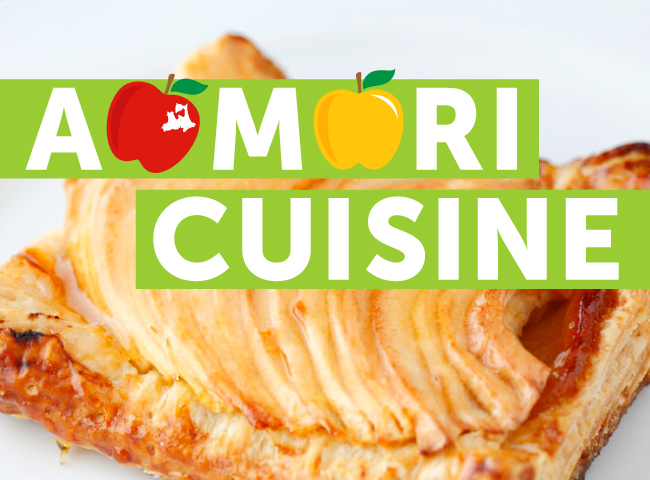Japanese Hamburger Steaks: Hambagu Vs. Hambaga
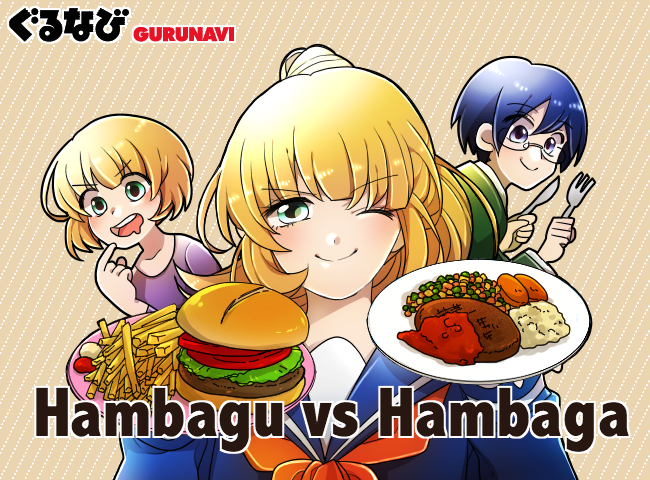
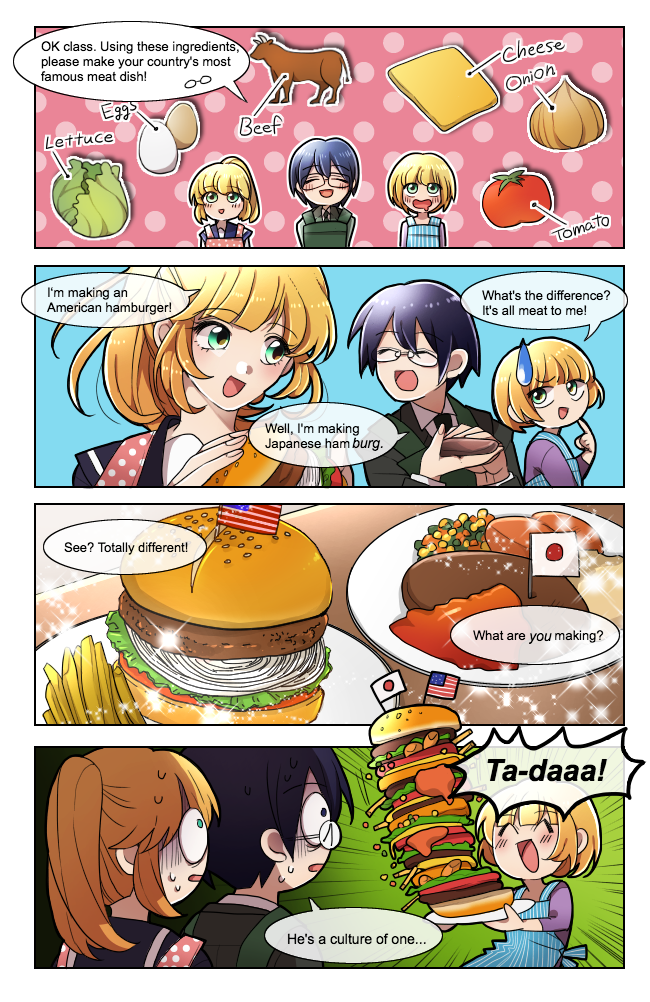
While “hambagu” and a “hambaga” (hamburger) may seem like the same item on a menu, these are actually two different dishes that can be found in Japan. Hambagu refers to a Japanese version of a traditional “Hamburg steak”, a dish which was spread around the world in the 1800s by German immigrants. Hambagu are a type of yoshoku, Western-style Japanese cuisine, along with dishes like omurice (omelette rice), doria, and Naporitan (Neapolitan) spaghetti. Although these meals are not traditionally Japanese, they became popular during the Meiji era when Japan sought to Westernize and eat the same foods as Western countries.
Hambaga on the other hand, refers to an American-style hamburger, and is seen as a distinctly foreign food to Japanese people. While there may be some unusual burgers in Japan that include toppings like shirasu (baby sardines) and crumbed prawn patties, burgers are ultimately viewed as an American rather than Japanese.
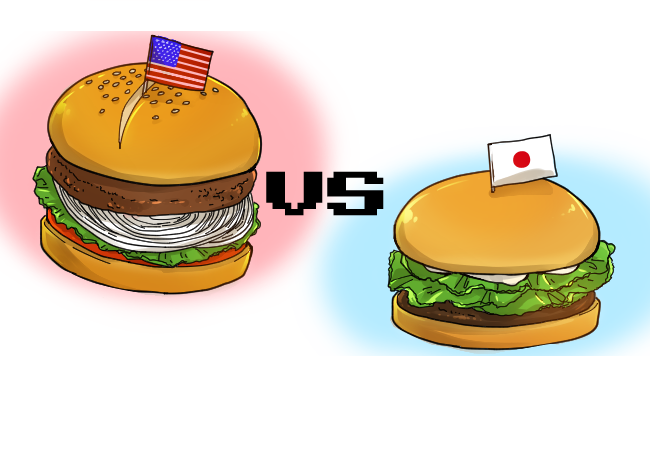
But how did these two foods come to be eaten in Japan? And what are the main differences between them? Become an expert with this handy guide on hambagu versus hambaga in Japan.
A Guide to Japanese Hamburger Steaks
A Brief History
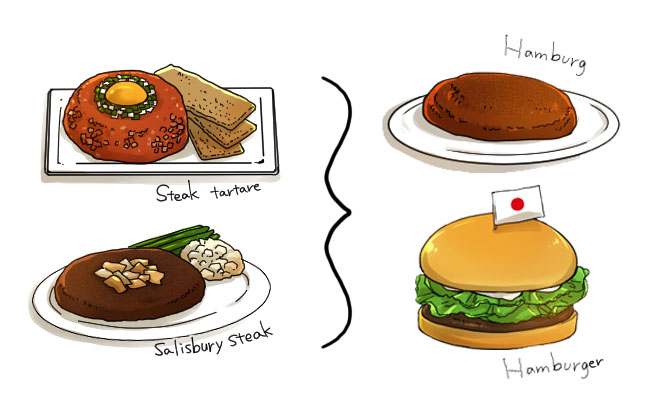
Historically, minced steaks were eaten raw in certain regions of central Asia by the horse riding Tatars, from which the style of food called “steak tartare” gets its name. This dish spread to Europe and became popular in many areas, particularly Belgium, France, and Germany. Around the 18th century, the people of Hamburg developed a dish of minced meat that was molded into the shape of a steak and then grilled and served with gravy, which became known as Hamburg steak, and German immigrants brought the dish with them to other countries, including America.
The exact origins of when a meat patty was sandwiched between two slices of bread to create what became known as the “hamburger” is unknown. Many people believe that it was time-poor factory workers who needed a faster way to eat a Hamburg steak during their short work breaks, which were often taken standing up. As the hamburger grew in popularity in America, Hamburg steak became less common, but a similar dish called “Salisbury steak” became popular. Salisbury steak could be made with pork in addition to beef, as well as bread crumbs to make the meat go further for a more economical dish.
In Japan, eating meat was forbidden for centuries due to traditional Buddhist customs, but during the Meiji era, a Western-style diet was promoted along with eating meat. Hamburg steak and minced meat dishes began to appear in yoshoku eateries around this time. Meat was not widely available in Japan until after World War II, but from the 1950s, Hamburg steaks became popular as a way to economically use beef and pork by mixing the meat with other ingredients like bread crumbs. As the dish spread in popularity, it was cooked in more and more Japanese homes and “hambagu” became a household word in Japan.
The hamburger arrived to Japan around this time, via the US military presence in Sasebo City of Nagasaki prefecture after World War II. There was a naval base located just outside of Sasebo, and the marines stationed there would occasionally go into the town during their time off. A number of hamburger joints sprung up around town to cater to the marines, and the “Sasebo burger” became the first hamburger in Japan—beating the arrival of the first McDonald’s by almost 20 years. Since then, a number of foreign fast food companies have taken root in Japan and an even greater number of Japanese burger chains and local shops have opened, too.
Serving Differences

One of the biggest differences between hambagu and hambaga is how they are served. Hambagu are eaten on a plate or served in sizzling on a cast iron skillet, covered in gravy. In Japan, hambagu are usually served with rice or bread, as well as a side of steamed or grilled vegetables or mashed potatoes. Hamburgers, on the other hand, are always served on a bun—typically a soft white wheat-flour bun, although artisan breads like brioche and pretzels can be used, as well as “alternative” buns such as those made from rice—and are meant to be eaten with one’s hands. Hamburgers often come served with a side of fries or onion rings.
The Hambagu Patty vs. Hambaga Patty

Both hambagu and hambaga patties start with minced meat and some sort of binding such as raw egg. Japanese hambagu patties are typically made with a combination of beef and pork, but there are other varieties of hambagu as well, such as tofu and minced chicken. The meat is mixed with diced onions that have been sautéed and cooled, for extra flavor. Hambaga patties, on the other hand, must be made with 100% beef in order to be achieve “hamburger” status—at least in America. Japan is not so strict on this point and often substitutes the all-beef patty for more Japanese options, like pork katsu cutlet or even sabamiso (mackerel fish simmered in miso).
Dressed for Success: How the Condiments Differ

Japanese hamburgers, and hamburgers in general, can be served with an endless number and variety of condiments and toppings. Some of the most common condiments include ketchup, mustard, and mayonnaise, as well as barbecue sauce or Thousand Island dressing. Toppings can range from cheese, lettuce, onion, tomato, and pickles to bacon, pineapple, avocado, fried onion strings--or just about any topping imaginable.
Meanwhile, hambagu can be served with a number of gravy-style sauces, from Western-style demi glace to chunky tomato sauce and red wine sauce. Japanese-style condiments include oroshi daikon, made with grated daikon radish, which can be seasoned with soy sauce or ponzu dressing. The hambagu patty may also be topped with a fried egg or melted cheese.
Where to Eat Hambaga and Hambagu
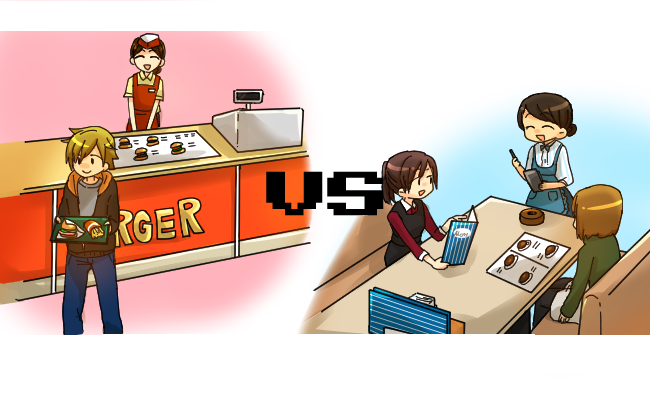
Both types of Japanese hamburger steaks are commonly found in Japan. Hambaga can be typically found at fast food restaurants (both foreign chains and local Japanese chains), specialty burger restaurants, cafes, and pubs. Hambagu are more widely available, and can be found everywhere from Japanese households to family restaurants, school lunches, steak houses, and yoshoku eateries.
Be Sure to Try Both Types of Japanese Hamburger Steaks!
Japan is home to not only some great local takes on the all-American hamburger, but also some seriously yummy hambagu steaks. Be sure to give both a try the next time you’re in Japan—check out the Gurunavi’s restaurant listings to find hambagu and hamburger restaurants across the country. Itadakimasu!





